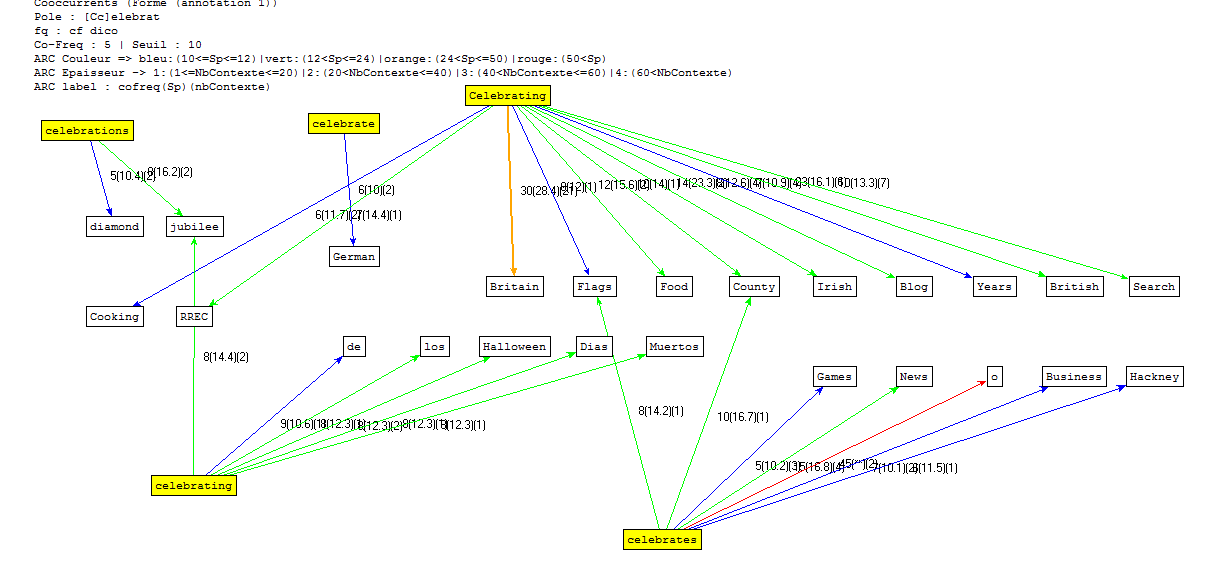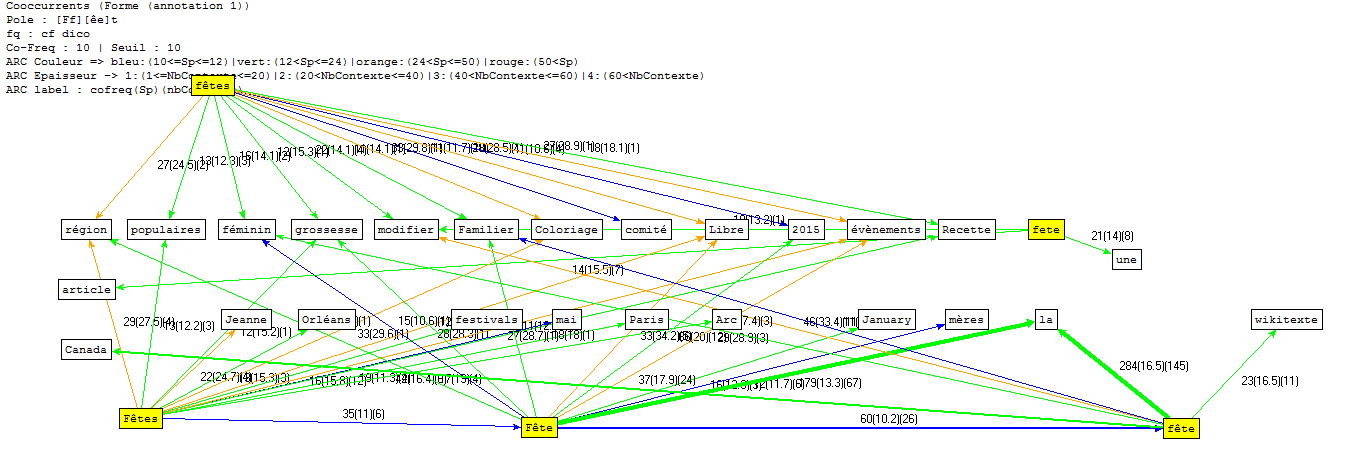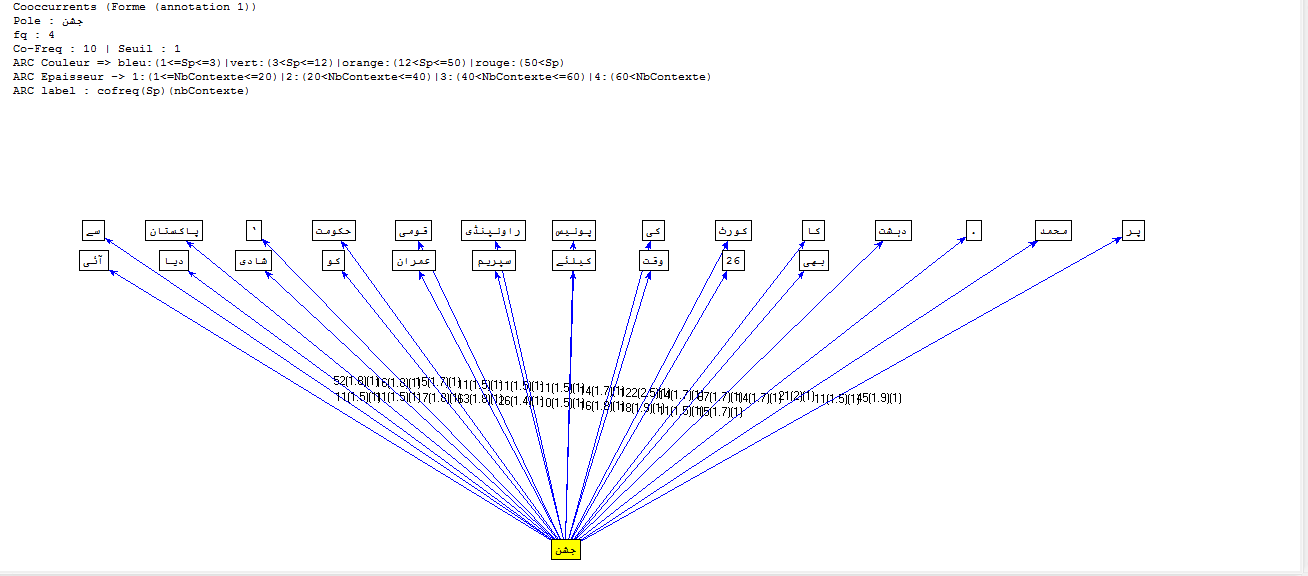Trameur
Le Trameur is a tool for exploration of Treebanks or parsed text corpora that annotates syntactic or semantic sentence structure. The software is distributed with graphical user interface (Fleury, 2013a).
For our project, we studied the co-occurence and co-frequence (i.e. words mostly used around our motive) of the word "celebration" in different languages and in last, we concluded about its textual appearance.
In this page, you can view the co-occurence of our motive in the form of graphs.
For english and French, we used the regular expression so that we could obtain the base of the word [Cc]elebrat and [Ff][êe]t.
Translation : « Urdu », « un », « fait », « Pakistan », « ma » etc.
After analysing these graphs, we can conclude the following points:
1. In the english graph, the word "marriage" occur the most.
2. In the french graph, the words "monde" and "paris" appears the most.
3. In the urdu graph, the words "pakistan" and "urdu" appear the most with the motive.
In this analysis, the conjuctions, subordinations, auxiliaries such as and, have, has, had , been etc. and ponctuations have not been considered.
Thus, in the english world, the word "celebrate" and its forms occur in contexts of marriages, in the french, the word "fête" occurs with "monde" & "paris" and finally in urdu, in occurs with "pakistan" and "azaadi". The usage of the same word in different parts of the world vary, as we can see in urdu, the word is more related to country or religion (although in urdu eid festivals are not described by this word). Generally, these terms semantically reflect the same context in which these terms appear.


